Breaking Ground
Unique Moments of Trail Crew Life
Story by Chris Bjork
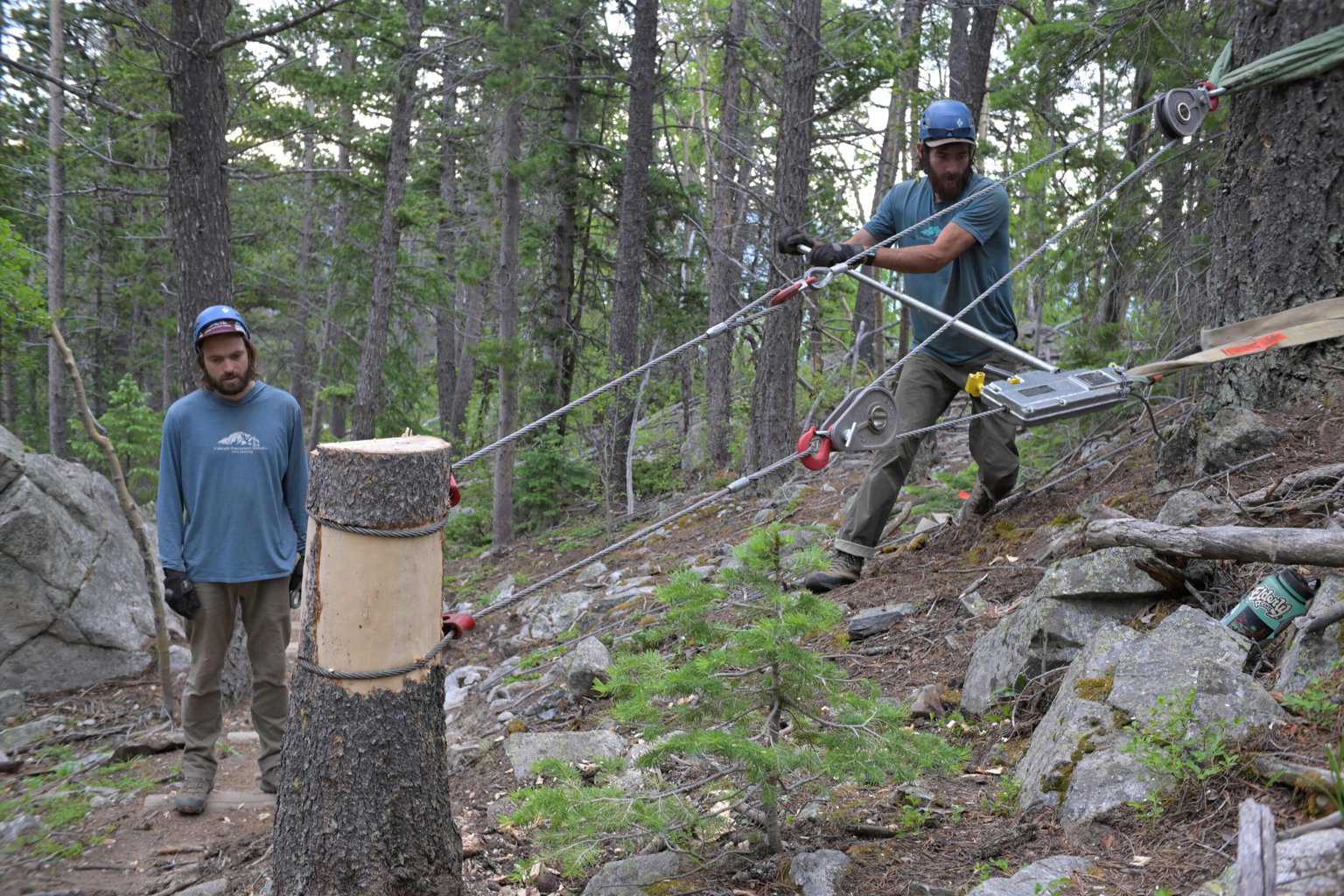
Photos by Riley Olds
Hitch 1
The first eight-day hitch began on the morning of Tuesday, June 11 at the Cabin Cove Forest Service Administration site at the base of Twin Lakes. This would serve as our headquarters for the duration of the season. From here, our crew would meet every other Tuesday morning and pack our personal gear into CFI’s work trucks before heading to the trailhead at Shavano. I recall the moon shining bright enough that first morning to blanket the entire valley in a silvery light, reflecting off the lakes like a flashlight taken to a giant mirror. Once we arrived at the base of Shavano, the daunting and arduous task of hiking more than a weeks’ worth of food, clothes and other supplies over a mile up to our basecamp began to dawn on the whole crew.
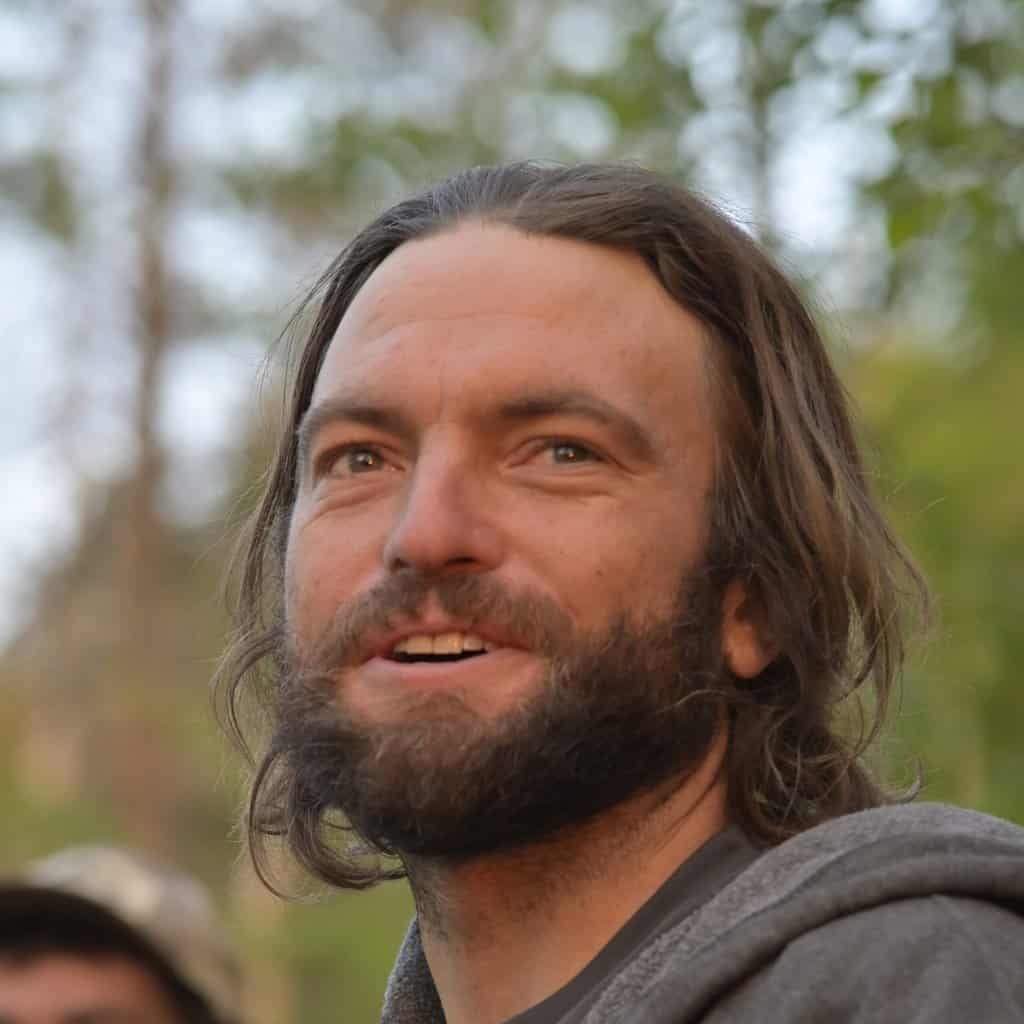
Chris Bjork
Lower Shavano Crew Member 2024
“This is judgment day,” Olds joked as the crew slowly strapped on their backpacks and lifted their extra bags from the work trucks. I was immediately humbled after walking the first quarter of a mile up the rocky, steep grade of the trail with that much weight on my back and torso. It was a worthy endurance test to begin each hitch and a way to acclimate to the week of strenuous manual labor ahead. Once we got to basecamp, we set up our personal tents and hiked the rest of the way to the worksite a few hundred yards west from our basecamp. The crew and I continued to carve new trail on Wednesday and establish bench, near the second bend of the new route.
Once opened, the new trail will eventually connect to the area above tree line where the high Shavano crew worked all season toward the summit. By its estimated completion time in 2026, it will be one of CFI’s only sustainably aligned trails built from trailhead to summit. A majority of the second half of the first hitch was spent restoring and clearing out a lower section of trail that had begun last season by CFI staff. The weather remained clear and sunny all week which kept morale high. The good weather also offered the opportunity to be creative with some team building activities to keep our minds entertained and our bodies strong at the end of each shift. One of the better ideas Tyler, Riley and I created was a workout station we made at our basecamp. This was created with two big lodgepole pine logs hoisted high horizontally, attaching gym rings. We also made a climbing training board on a smaller log positioned below it. The first hitch proved to be tough, fun and informative. I felt proud knowing Shavano is my home away from home for the summer.
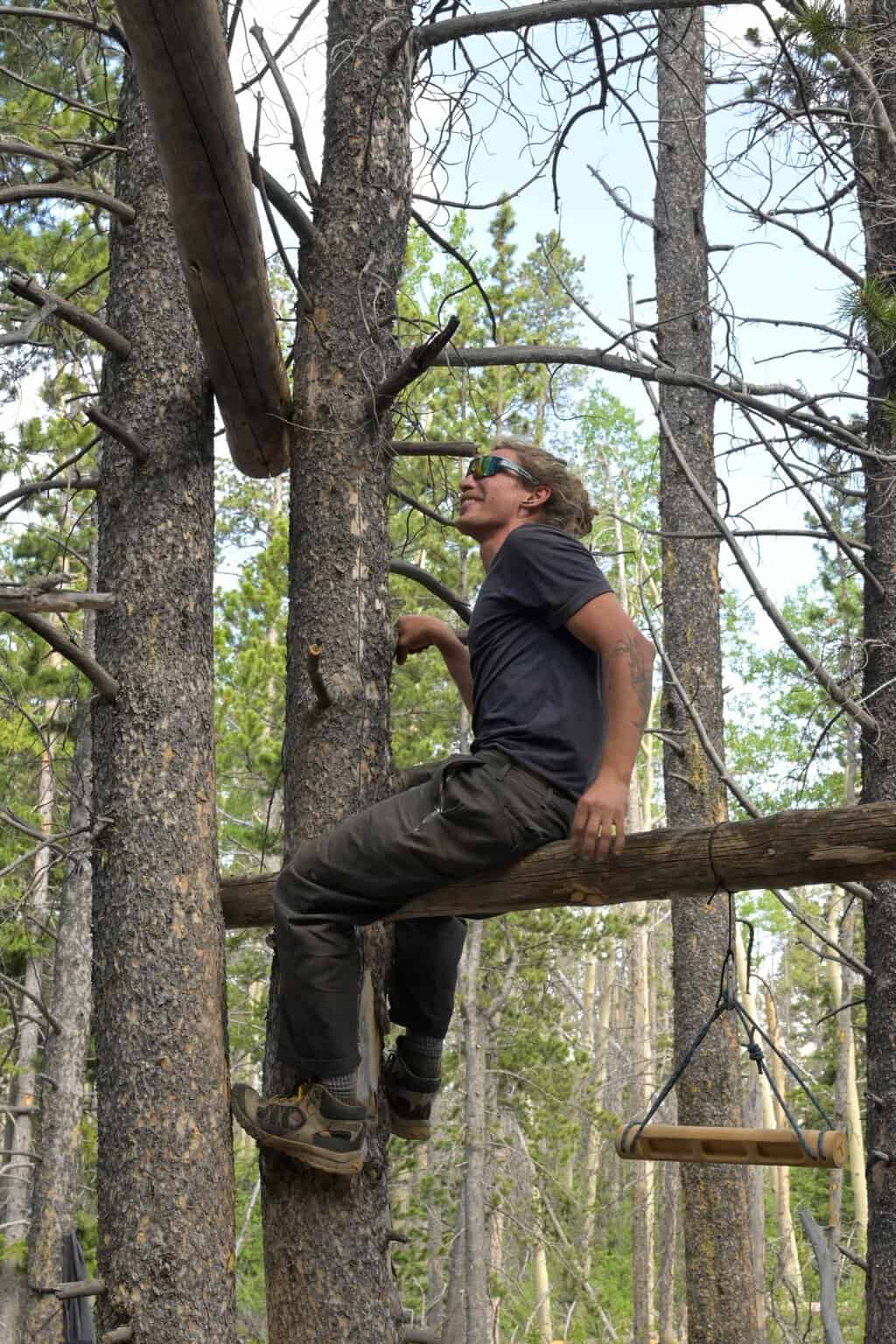
Hitch 2
Hitch two felt like it approached swiftly. During the first off hitch, I spent time contemplating next week’s work. We arrived at the trailhead Tuesday morning at 7:40am. The sun made its second return on the mountain with a bluebird sky and warm temperatures at the base of the mountain. As the crew wiped the last bit of sleep from their eyes while gathering their belongings, I realized I would have to make another trip to grab the rest of my gear. After finally getting to camp and setting up our tents, we made our way to a lower section of the first area we cut tread during field training. The area we worked seemed slightly more forgiving in its overall less steep and rugged terrain.
This meant that the trips carrying the filled dirt bags away from our worksite wouldn’t be quite as taxing as other sections we began. After constructing a smoother section of bench, Dave, Riley and I put together one of the first stabilizing structures on the trail. This required several rounds of “shopping” for the appropriately sized granite boulders that would fit into the foundation of a mono wall. As the stone riprap wall began to take shape, I saw the structural purpose the wall would provide in preventing further erosion on a vulnerable bend of the trail.
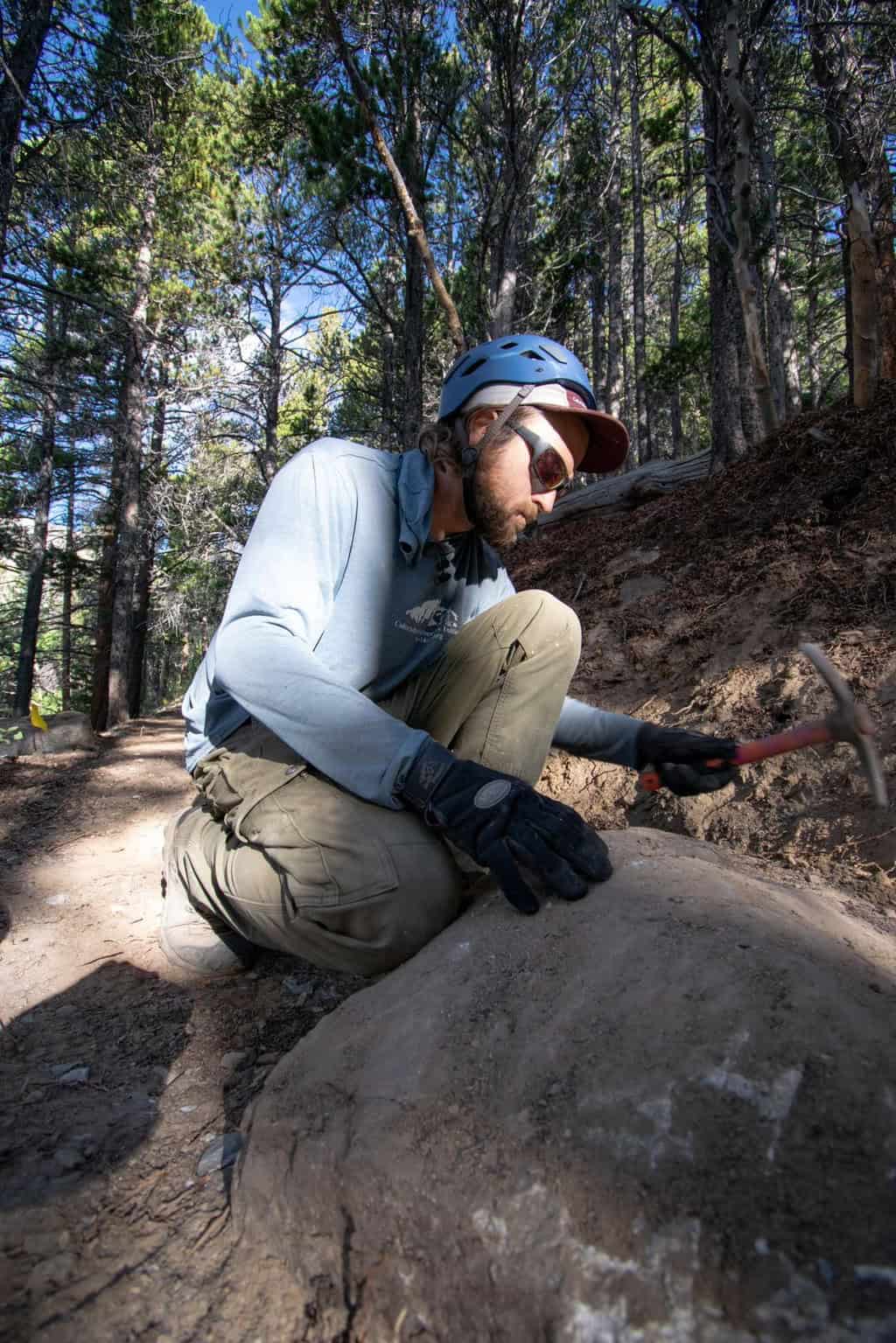
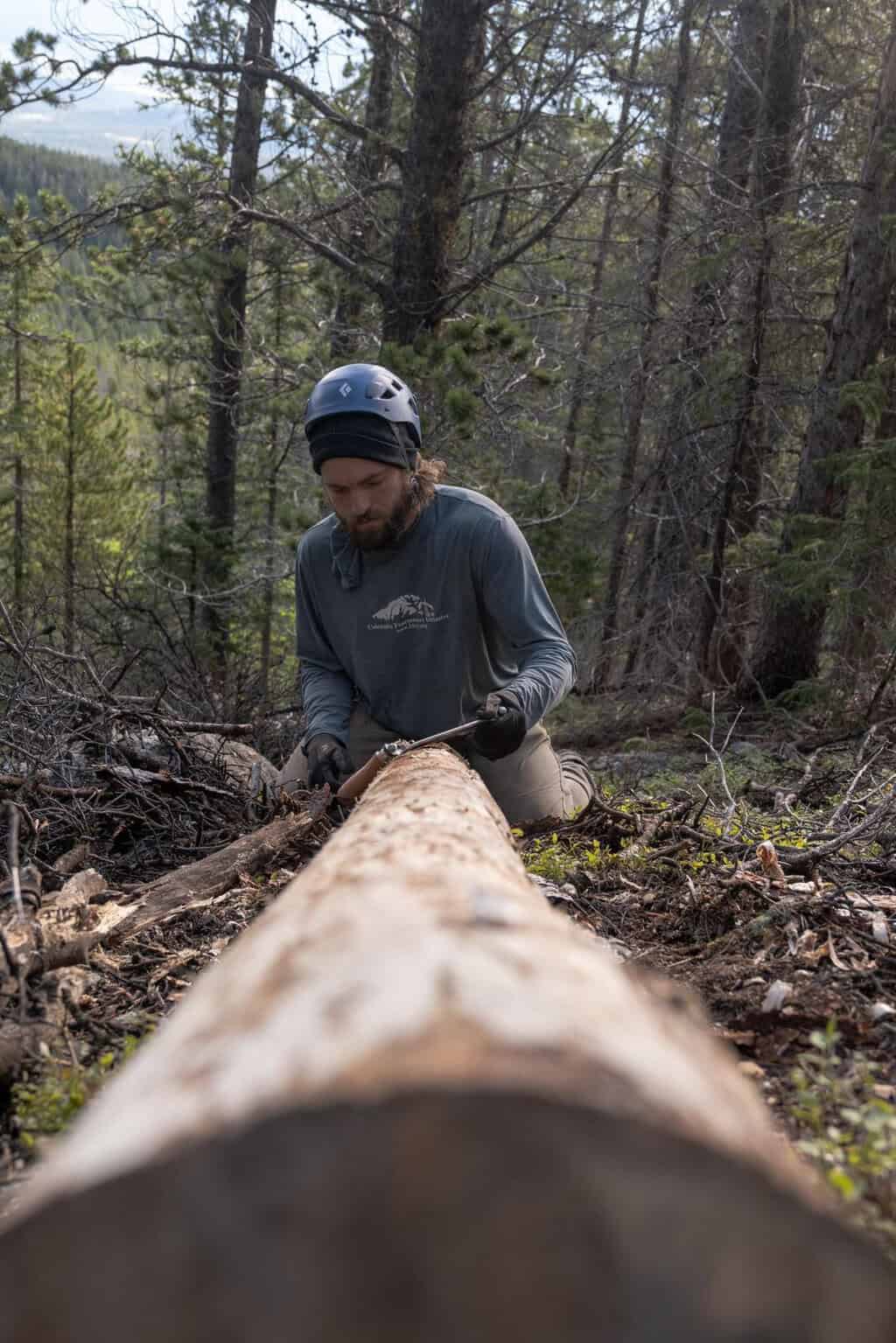
We continued working on the wall through Thursday’s shift. The evening ended on a nice note with some quality team bonding with a couple members of the high crew over a game of Settlers of Katan in our wall tent. We made it to day four.
Friday morning began with a brilliant, golden sunrise as we descended to the junction where the old trail would connect with the new. About 35 to 40 feet of bench and backslope needed to be set to clear an opening and transition point. Within the first hours of silent work, we cleared the topsoil in our sections. The stillness of the morning was broken by a loud exclamation from Barrett, “There’s a beer over here!” As the tools in our hands dropped, we rushed over to Kate and discovered an unearthed and unopened Miller High Life from the tread she was digging. We examined it closely as if it were a rare mineral. It was an entertaining way to start the day, and our only buried treasure we would find all season. For the remainder of the shift, we began grip hoisting the first of many Pine and Aspen tree stumps to continue clearing the corridor. I quickly learned these tools were one of the most essential and widely used for most CFI projects. They are portable, lever operated, manual hoists consisting of a traversing wire rope used to lift, pull and stabilize heavy loads. For lower mountain trail crews, like us, they are the favorite device for pulling out tree stumps. But they are also useful for moving large boulders away from or near newly constructed trails in areas above tree line in the high alpine.
On Saturday and Sunday, we got our first experience working with volunteers. They were part of the High Lonesome Trail racing organization. Qualifications to run the race were contingent on participants putting in some volunteer hours involving trail work. They had developed a partnership with CFI, an ideal organization to earn those necessary volunteer hours. As we began forming bench in one of the hardest sections of the new route, the volunteers were very helpful in moving dirt and duff away from the worksite. Along with moving dirt, our crew kept the volunteers busy directing them to move the abundance of rocks we pulled from the tread far away from the trail. Their collective efforts helped save our crew from what would have surely been another day or two of additional work. It would be the first of two times this season where we’d benefit from the work done by volunteers.
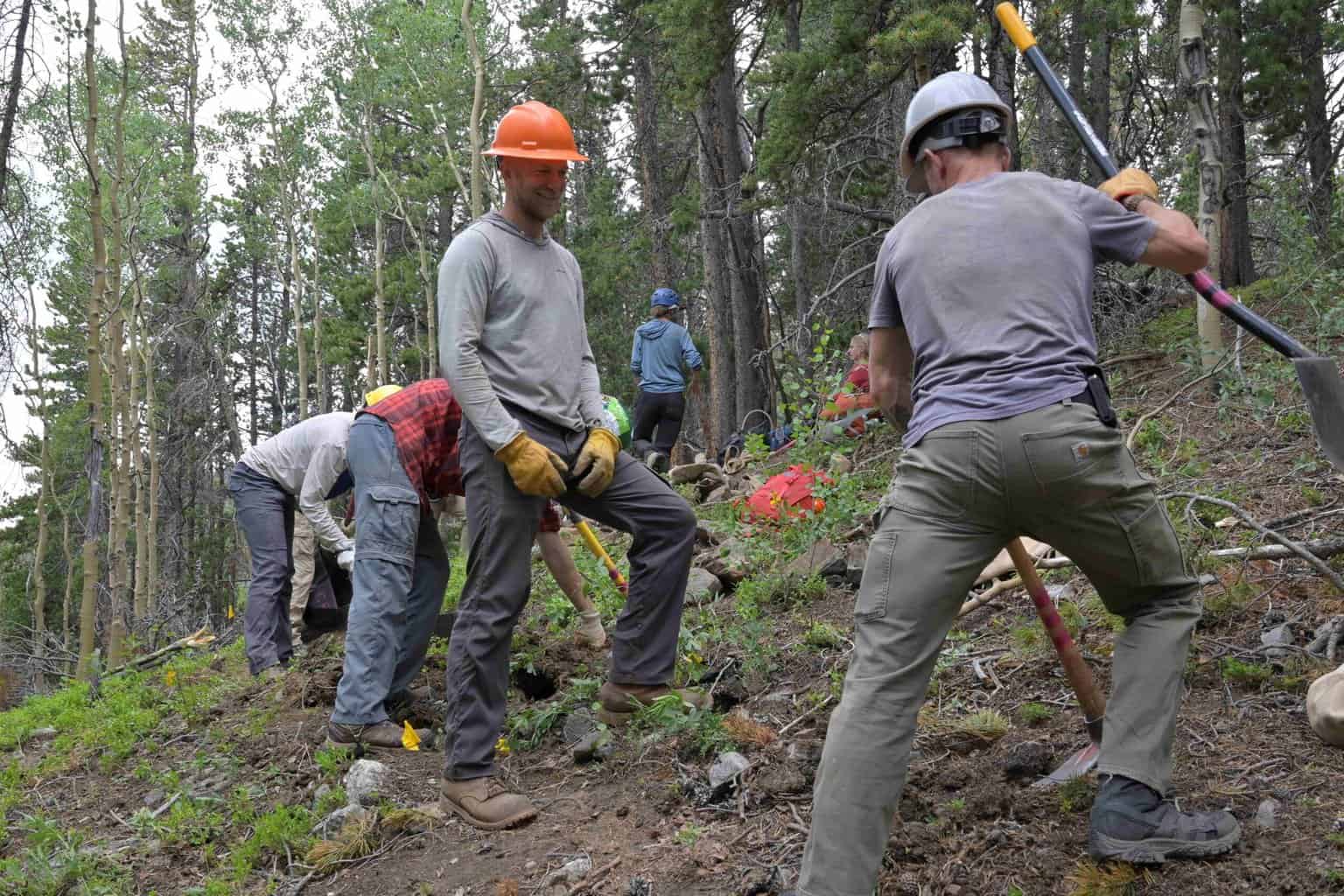
Spirits from the crew were high as we finished off the hitch’s last couple days. We successfully accomplished a considerable variety of work in some of the hardest sections of the new route so far. It was a hitch that was beneficial in improving my stamina, endurance, patience and conditioning which further prepared me mentally for the upcoming work the rest of the season.
Come back tomorrow for part Part III.


